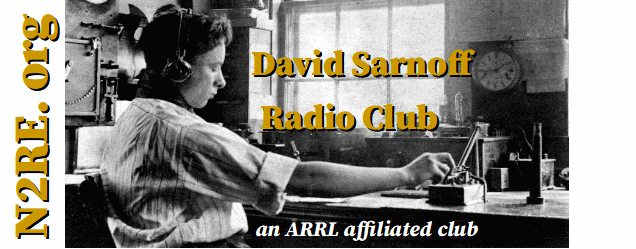The investigation of meteor scatter communication began with this message from Bob, N2LO:
Lyrids Meteor Shower 2022
2022 April 15 to 29 duration
2022 April 21 to 23 peak
WSJT settings..
MSK144
50.260 MHz RF
Ftol 200
Rx 1500Hz audio
Report 0
T/R 15s
AutoSeq <
East coast point West
Transmit: odd / first
Bob is referring to software called WSJT-X found via: https://www.physics.princeton.edu/pulsar/k1jt/wsjtx.html
—
Bob sent a map showing his success:
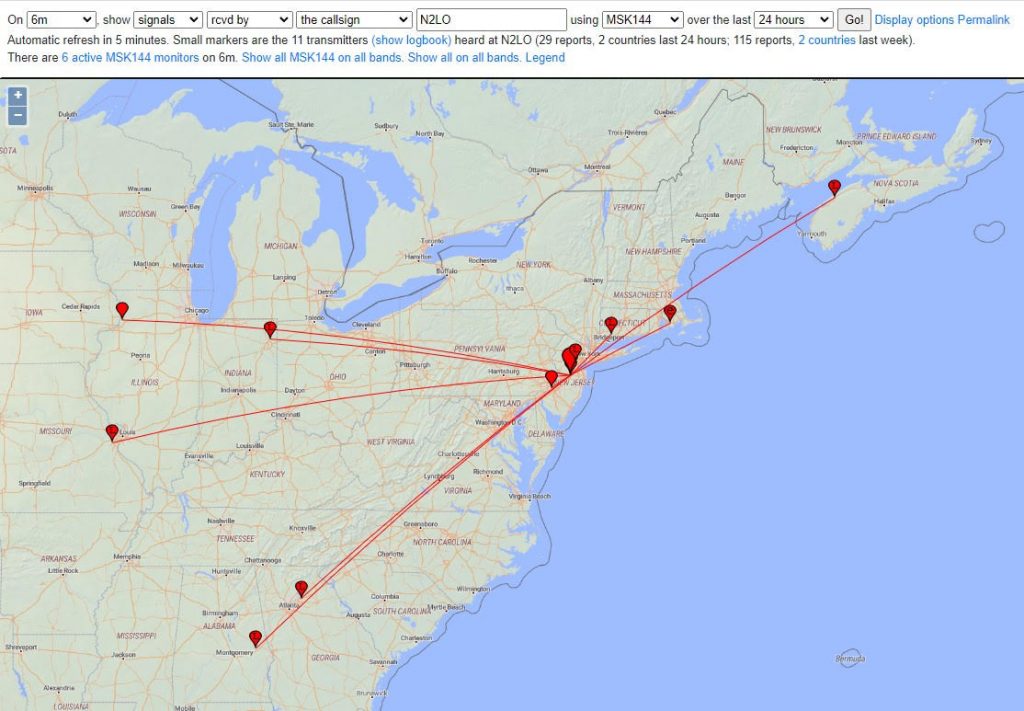
—
Soon N2GJ chimed in:
True story:
The first time I operated a VHF/UHF contest at Joe Taylor’s QTH (K1JT), he was briefing the operators on the operational plans for the event. He told us he planned on using “meteor scatter” later in the afternoon.
When he asked for questions, I asked, “But, Joe, don’t we have to wait until nighttime for meteors?!”
After a longish pause, he gently explained that meteors enter Earth’s atmosphere 24/7, although we only see them at night. To say I was embarrassed by my ignorant question would be an understatement, but his kindness softened the blow!
Later, I heard these weird pings in the speaker as signals bounced off the ionized meteor trails. Joe also explained that, based on the altitude of these tracks, there is a limit to the distance two stations can be in order to hear each other. I don’t remember the actual number but I recall it being a bit over 1,000 miles or so.
N2LO sent this link to a NASA sourced presentation:
METEOR SCATTER COMMUNICATIONS: THE SCIENCE BEHIND THE PINGS
DR. ROB SUGGS KB5EZ SPACE ENVIRONMENTS TEAM LEAD NASA/MSFC/EV44
NASA METEOROID ENVIRONMENT OFFICE
MSFC AMATEUR RADIO CLUB
NORTH ALABAMA DX CLUB OCTOBER 2017
https://ntrs.nasa.gov/api/citations/20170012398/downloads/20170012398.pdf
N2LO also posted an excerpt from page 6 of an online .pdf document which lists “Daytime” meteor showers (and also, on another page, night time ones):
“radio observers, we list the UT peak times for these showers (see also the remark below):
April Piscids (144 APS) – April 22, 22h
; ε-Arietids (154 DEA) – May 9, 15h
May Arietids (294 DMA) – May 16, 16h
; o-Cetids (293 DCE) – May 20, 15h
Arietids (171 ARI) – June 7, 16h
(more details see page 10);
ζ-Perseids (172 ZPE) – June 9, 18h
; β-Taurids (173 BTA) – June 28, 17h
Signs of most were found in radio data from 1994–2008, though some are difficult to define individually because of the proximity of radiants. The maxima of the Arietids and ζ-Perseids tend to blend into one another, producing a strong radio signature for several days in early to mid June. The shower maxima dates are not well established. An apparent modest recurring peak around April 24 occurs perhaps due to combined rates from more than one shower. Problems of shower identification concern the δ-Piscids (previously listed as having a peak on April 24). The IAU list does not recognise this currently as a genuine shower. Similarly, the o-Cetids are not listed in the IAU shower list; the number and abbreviation given here are actually for the IAU source called the “Daytime ω-Cetid Complex”, because that seems a closer match to the o-Cetids as defined by earlier reports.”
https://www.researchgate.net/publication/352741920_2022_Meteor_Shower_Calendar
Note that the document’s “Table 5” on page 25 has day and night showers listed and an indication of how strong the showers are using “ZHR” Zenithal hourly rate as an indicator for how many meteors can be detected in an hour. (the η-Aquariids, around May 6th are about three times the ZHR as the Lyrids were for April 21.)
—
N2LO reported more success on April 21, 2022:
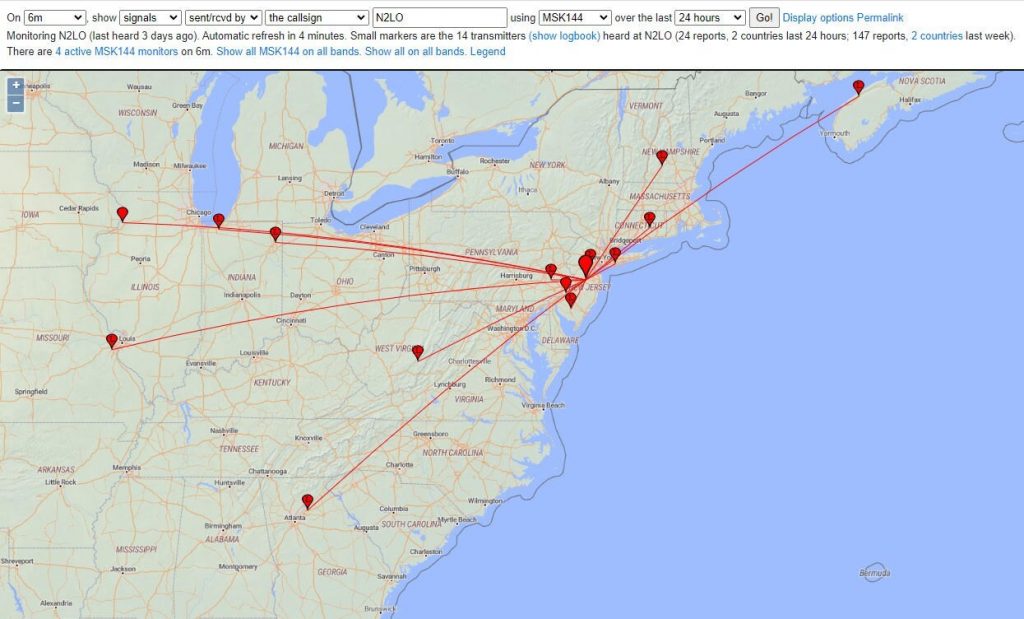
—
N2CTW had some success listening on the morning of April 25, using an IC-746PRO and an unmatched G5RV dipole on six meters:
Here’s 30 seconds of graph showing WA2FZW QSO with K0TPP:
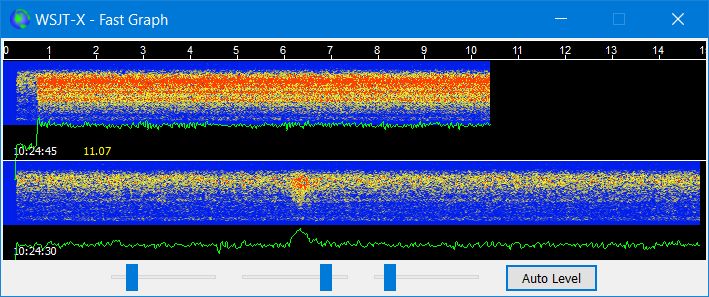
The upper graph shows a local station WA2FZW sending a signal for any available meteors to reflect back to earth.
The “ping” on the lower graph is K0TPP’s signal being reflected by a meteor. The peak is at 6.4 seconds after 10:24:30.
The window snapshot below also shows what settings were used. The “Standard Messages” were not used, this was a “listen only” monitoring exercise.
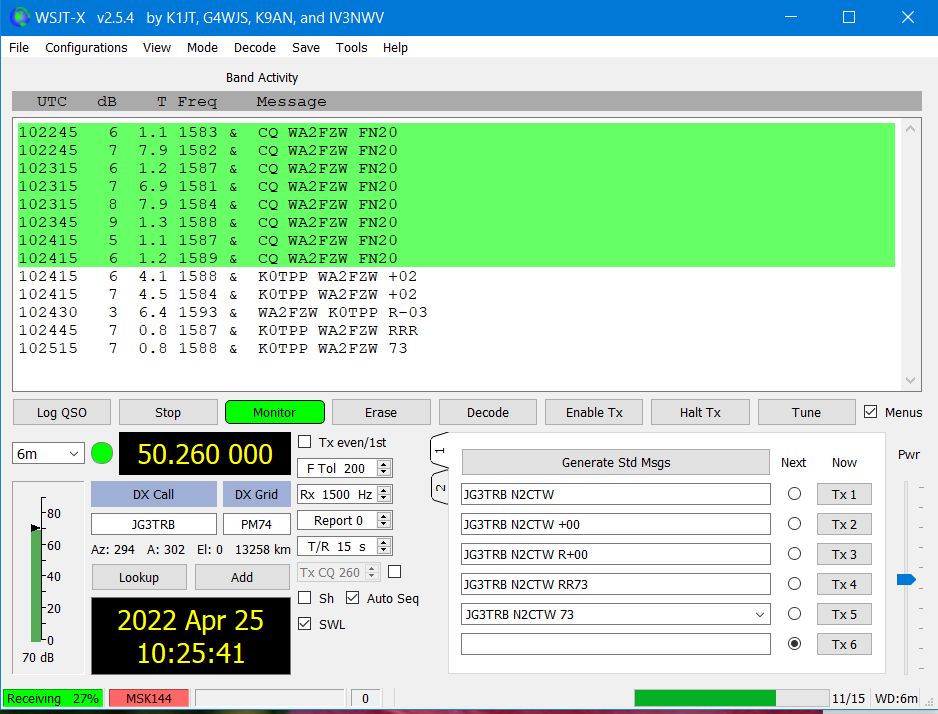
I hope this helps you get into Meteor scatter communications…. on 6 Meters, 10 Meters, 2 Meters or wherever you want to try!
